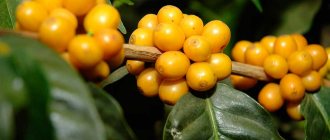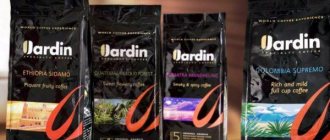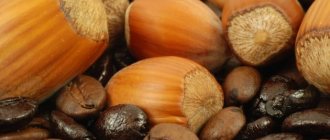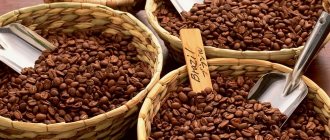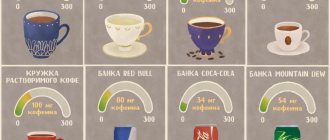By inna2041 Jan 11, 2018
18677
|
0
Every day on our planet, people consume over two billion cups of coffee. Therefore, this drink can rightfully be called a leader among others sold in stores. And it has gained popularity not only because it has a noble aroma and taste, but also because today there are many recipes and methods for preparing it. True coffee fans are ready to spend a lot of money without searching for promotional codes and purchase elite varieties. And the fact that they will end up paying several hundred dollars for one hundred grams of the divine drink does not stop them at all. In this article we will tell you what the most expensive coffee in the world is.
Even though coffee does not grow everywhere on our planet, its harvest directly depends on weather conditions, and coffee plantings are vulnerable, prices for its beans are only rising. Especially if we are talking about a decent product of good quality. What is the most expensive coffee in the world?
Black Ivory
Translated it means “Black Tusk” and the price of this coffee beans is very high. Apart from Thailand, Black Ivory is not produced anywhere in the world. These are not just roasted coffee beans. In order to get a kilogram of this coffee, it is necessary to collect about 33 kg of selected Arabica beans and they must be eaten by an elephant, along with rice, cane sugar and fruit.
For a kilogram of Black Ivory beans you will have to pay more than $1000.
Digestion of this mixture lasts up to 35 hours. During this time, the grains become saturated with fruity aroma. As the berries pass through the elephant's gastrointestinal tract, they break down protein, which would otherwise give the drink a bitter taste if the grains were processed normally. The taste of Black Tusk is soft, without bitterness, with a slight hint of fruity aroma.
To get grains ready for brewing, you need to select berries from the manure, wash them thoroughly and dry them. It is possible to drink a mug of this coffee only in the Maldives, Abu Dhabi, and also in the reserve, which is located on the borders of Thailand and Laos.
Historical excursion
Africa is the birthplace of coffee. There is evidence that it was grown and consumed in Ethiopia as early as 850 BC. Initially, Ethiopians used exclusively fresh berries “for tone.”
A ripe coffee berry consists of a grain covered with a silver skin, a parchment shell covered with gluten, and pulp. Depending on the color of the pulp, the berry can be yellow or red.
A ripe coffee berry looks like a cherry.
The Arabs quickly adopted the traditions of Ethiopian culture, including the custom of drinking coffee.
The ancient recipe consisted of preparing a mixture from a simple composition:
- crushed fresh coffee beans;
- milk;
- animal fat.
The resulting mixture was used to make balls that travelers took on their long journey. This prehistoric energy drink invigorated and had a general strengthening effect. And only in the 12th century. semi-finished coffee products gave way to a drink made from raw beans.
How coffee “conquered” the whole world:
- XII century The process has evolved. Now the dried grains were roasted and then ground. Coffee powder was poured with boiling water. The Arabs were no strangers to gastronomic delights - they added herbs, spices and milk to coffee.
- XV century Thanks to merchants and travelers, the tradition of coffee drinking spread throughout the eastern countries, and then reached Europe. In 1555, the first public coffee house was opened in Constantinople.
- XVI century Coffee has gone “to the masses.” They began to drink it in different countries.
- Mid-17th century Coffee plantations were established in South India.
- End of the 17th century Coffee came to Russia: it was first mentioned in documents from the era of Peter I.
- Beginning of the 18th century The Dutch brought coffee seedlings to Indonesia - to the islands of Java and Sumatra, from there coffee migrated to South America. The Arab monopoly is over.
Today, coffee is cultivated in countries with tropical and subtropical climates. They form the “coffee belt” of the planet, which includes over 80 countries located in such regions of the globe as:
- Africa;
- Asia;
- Australia;
- South America;
- Central America.
For the last 150 years, Brazil has been the absolute leader in the world among coffee exporting countries. Every year, about 55 million bags of coffee beans are harvested in the country of “wild monkeys”.
The classic technology for preparing the drink, practiced in the first coffee shops, has not changed to this day.
Who drank "coffee" with special pleasure
There were legends about the French writer Balzac that he drank up to 50 cups of coffee a day. So he excited the muse in order to finish several novels on time. The quantity of the drink is clearly exaggerated - after all, we are not talking about the usual cups, but demitasses (French demi-tasse - “half a cup”), which held only 60 ml. However, it is a fact that the French prose writer was an ardent fan of coffee. They say that he even chewed grains when it was not possible to immediately brew a drink.
There are many great people among coffee lovers - Peter I (drank strong black coffee without sugar), Catherine II (she ordered 4 tablespoons of ground coffee to be brewed for one large cup of coffee), Napoleon (he adored coffee and considered it the greatest treasure of the world).
Johann Sebastian Bach dedicated his “Coffee Cantata” to his favorite drink, and coffee inspired Pushkin to create; he admitted in a letter to a friend: “I wake up at seven o’clock, drink coffee and lie in bed until three o’clock. I recently signed my name and have already written the abyss.” It is a known fact about Michel Lermontov that before the last duel he stopped at the famous Roshke coffee shop in the village of Inozemtsevo to cheer himself up with “coffee.” George Sand believed that only cigars and coffee could sustain her “pathetic inspiration.”
There is no limit to perfection
However, let's not lie: people did not immediately fall in love with coffee. At the assemblies of Peter I, nicknamed “forced fun,” they were not only forced to dance, but also served drinks unusual for Russian nobles - coffee, chocolate - which only increased the tension of the guests.
What frightened me most was the specific bitterness of the drink. But she also played a positive role. Recipes for preparing the drink began to be improved. To remove the bitterness, the following was added to it:
- cinnamon,
- cardamom;
- ginger;
- nutmeg;
- black pepper;
- cloves;
- cream or milk;
- sugar.
According to statistics, coffee lovers earn more than tea lovers. Scientific studies have shown that two to three cups a day do not cause any harm, but can significantly prolong a person’s life.
Main types of coffee:
- Arabica;
- robusta;
- liberica;
- Excel.
In recent years, coffee shops have become concept establishments. This trend is observed not only in megacities, but also in small towns and small resort towns. Russia is no exception to the rule. In our country, coffee shops are a fashionable meeting place. Therefore, their number is constantly growing.
Today, establishments offer popular drinks:
- espresso;
- cappuccino;
- look;
- latte;
- ristretto;
- mocha, mocaccino;
- Americano;
- Turkish coffee.
Morning espresso works better than any alarm clock
For their preparation, various varieties of Arabica are most often used, which have a soft and delicate taste. Robusta has a strong, slightly bitter taste. Liberica, due to its pronounced bitterness, is added to the coffee mixture only in small doses. It gives the drink a unique flavor bouquet. Excelsa is the rarest and most expensive coffee. Thanks to its deep taste and delicious aroma, it has captivated gourmets around the world. Coffee lovers are willing to pay impressive sums of money at auctions for exotic coffee.
Kopi Luwak
In second place in the ranking is coffee, which is produced only in 3 countries - South India, the Philippines and Indonesia. Musangs (also known as luwak) are small animals whose food consists of ripe coffee beans.
The average cost of one cup of this coffee is $100.
Civet, a substance present in the gastric juice of musangs, helps give the final uniqueness and uniqueness to the taste of coffee. In total, about 500 kilograms of Kopi Luwak are produced annually. Only true gourmets can afford it. They say this coffee has a subtle aroma of chocolate and jungle.
Hacienda La Esmeralda
The peculiarity of the Hacienda la Esmeralda variety is that the coffee trees from which the beans are collected grow near Guava trees on the slopes of Buru in Panama.
The cost of Hacienda la Esmeralda beans is slightly more than $100 per 450 grams.
The taste of this coffee is quite extraordinary.
Fifth place – I'll be back
Surely, you are wondering which coffee has received this mark. We present to you a unique option – Geisha (Geisha). The price per kilogram of this type of grain product varies from $290 to $330. Country of manufacture: Panama. It is interesting that in the 20s of the last century, experts practically put an end to this species. After all, in their opinion, it is absolutely not susceptible to many diseases, as a result of which these trees very often died. Thus, he was destined to sink into oblivion, but this did not happen. His Majesty chance intervened. The fact is that in 2003, one of the owners of coffee farms in Panama discovered these coffee trees on his property. And the most amazing thing is that it was thanks to them that I won the international competition. They say that one of the judges was so delighted that he wanted to purchase this species for his personal collection. It has citrus sourness, the taste of lime and lychee, and a delicate and long aftertaste. It is worth noting that the return of this variety is the most significant event in the coffee industry of the early 21st century.
Interestingly, a coffee product called GEISHA is produced in Colombia and, to be honest, is clearly inferior in taste to the original. And the very variety that we are talking about is produced by La Esmeralda and is produced under the same name. By the way, he has nothing to do with Japanese women with the same profession.
Blue Mountain
A variety of Arabica beans. Coffee trees grow on mountain plantations in Jamaica. The grains themselves are of a very unusual color - blue-green. Hence the name – “Blue Mountain”.
The cost of the beans is $200 per 450 grams.
Light astringency, slight sourness and a breathtaking aroma are what perfectly characterize Blue Mountain.
Coffee from Saint Helena
Saint Helena Island can be called pristine. It is located far from industrial facilities. Clean air and good ecology are the key to successful cultivation of coffee trees and production of an elite drink.
The price of 500 grams of such coffee beans is about $100.
The plantations are located at an altitude of 3000 meters, the soil is of volcanic origin. Coffee beans from St. Helena Island are an elite and rare variety.
El Ingerto
The place of origin of El Injerto coffee beans is the Republic of Guatemala. This variety of coffee is much cheaper than Black Ivory, but still expensive.
Its average price is $50 per 450 gram package.
The peculiarity of this coffee is its exquisite taste and aroma. The climate of Guatemala is cloudy and it often rains, which is why El Injerto has an extraordinary taste and the highest quality of beans.
Hacienda Santa Ines
This is perhaps the best coffee produced in Brazil. Refreshing notes of citrus and a taste of chocolate prevent this coffee from being confused with other varieties.
450 grams of Fazenda Santa Ines, costs $50.
Coffee beans of this variety have become especially popular and widespread in Brazil and Canada. The main distinguishing factor is the manual collection of grains.
Gourmet coffee
A special “caste” of coffee lovers is gourmets. Crossing the threshold of a coffee shop, they already know for sure whether they can have a cup of an invigorating drink here, or whether they need to rush out of the establishment. It would be a good idea for everyone who considers themselves a connoisseur to master coffee education.
There are “rules of good manners” for coffee:
- the grains should be approximately the same size;
- degree of roasting - uniform;
- the aroma is rich.
The taste of coffee is influenced by the area where it grows:
- Kenyan - with a slight chocolate flavor;
- Ethiopian - has a rich chocolate flavor;
- Hawaiian - with pronounced fruity notes;
- Brazilian - has a chocolate and nut flavor;
- Costa Rican - will surprise you with its honey flavor.
The worst enemy of coffee beans is air. After opening the package, do not pour the contents into another container. It is recommended to store coffee in its original container, additionally “sealing” it in an airtight container.
Los Plains
Los Plains are grown in El Salvador. It has a sweet floral aroma, and bright notes of cocoa are felt in the taste. Also, it is worth noting that the taste of this coffee is very rich and opens with each subsequent sip of the aromatic drink.
Price 450 gr. of Los Plains coffee beans is $40.
Los Plains coffee has received many international awards and its taste is highly valued by gourmets.
Kona coffee
Coffee trees of this variety grow on the slopes of volcanoes in Hawaii. The elite quality of Kona coffee lies in the fact that it is “born” in unique climatic conditions.
The price of Hawaiian coffee is approximately $35 per 450 grams.
Rich soil is also an important factor for growing quality coffee beans.
► How is the most expensive coffee in the world produced?
TOP 10: The most expensive coffee varieties in the world
Many of us can't go a day without a cup of coffee, whether we brew it at home, pour it from the machine in the office, or head to the local Starbucks. We may think we spend a ton of money on coffee, but the truth is that some people spend more on a pound of coffee than we do on all the coffee we drink for a whole month. We've identified coffee companies that charge their customers far more than the cost of the average coffee. You'd be surprised how much money some people throw away on their daily caffeine fix. Keep reading to learn about the 10 most expensive coffees in the world!
10. Los Planes coffee – $40 per 450 grams
Los Planes coffee comes from El Salvador and is ranked second in the 2006 Cup of Excellence list. This coffee comes in at $40 per 450 grams, which is much cheaper than number one on this list, but still quite expensive for the average family.
This coffee tastes distinctly of brown sugar, as well as hints of caramel and tangerine. It's a unique taste, and the only way to know how good it is is to open your wallet and buy yourself some of it.
9. Starbucks Quadriginoctuple Frap Coffee – $47.30 per cup
One day, a man named Beau Chevassus ordered this drink at his local Starbucks. This crazy guy asked for forty-eight shots of espresso, protein powder, some bananas, vanilla beans, soybeans, and Frappuccino chips. The resulting drink was poured into a 1.5 liter mug for a total price of $47.30.
The man drank coffee for several days, and until now no one has broken his amazing record. We may never order this undoubtedly expensive drink, but it's good to know that we're not the only ones who can't live without Starbucks.
8. Fazenda Santa Ines coffee – $50 per 450 grams
This coffee comes from the Mantiquera Mountains in Brazil and has a luxurious taste. The owners of this company also raise Girolando cattle, and use only the best that money can buy.
The company cares about the environment by promoting the use of recycled water and its own waste as natural fertilizers. You may not see anything special about this coffee, but the history of its cultivation is worth adding a pack to your cart.
7. Jamaican Blue Mountain Coffee – $69 per 450 grams
This coffee is grown in the Blue Mountains of Jamaica and is distinguished by its blue-green color. The company received permission to sell this coffee in the States, and the beans are still harvested to this day. This coffee helps support local workers and farmers as the company owner employs them.
You may be against paying so much money for coffee, but once you taste it, you won't want to drink anything else.
6. Coffee Hacienda La Esmeralda – $182 per 450 grams
This coffee originates from Panama, and they are determined to grow new varieties of high quality coffee. Over the years, this coffee has received several awards, The Best of Panama, Rainforest Alliance Cupping for Quality and the Specialty Coffee Association of America Roasters Guild Cupping Pavillion.
At auction, the coffee sells for $182 per 450 grams, but you can buy a 1.35 kg set of different coffees for $475.
5. Kopi Luwak coffee – $250 for 450 grams
Kopi Luwak is a coffee with a smooth, balanced flavor that retails for $250 per 450 grams. The company was created after its owner communicated with the leader of the B'Laan tribe. These poor people helped grow and sell this unique coffee.
The beans pass through the gastrointestinal tract of the civet cats that live here, helping people improve their standard of living.
4. Saint Helena coffee – $300 per 450 grams
The best place to drink this coffee is Saint Helena because otherwise you will have a hard time getting your hands on it. It is only sold in the UK's only store at Harrod's in London, priced at £60 per 100g, which works out to around £300 per 450g.
Local restaurants on the island serve the best coffee money can buy, but in the last few years there have been problems growing the coveted beans as coffee trees do not grow at the expected rate.
3. Finca El Injerto coffee – $500 per 450 grams
These coffee beans come from Guatemala, where they produce a wide range of coffees to suit every taste. The company only uses its own coffee trees and never buys beans from other suppliers. The company wants its customers to know that it takes pride in the quality of its beans, which is only possible if you grow them yourself.
The coffee has such a unique and rich taste that you can simply die from the pleasure, which is why it costs $500 for 450 grams.
2. Black Ivory coffee – $1000 per 450 grams
The reason this coffee is so expensive is because it passes through the gastrointestinal tract of elephants. Coffee is never kept in stock and is sold only to five-star hotel chains.
Its taste reveals roasted cherries, as well as hints of chocolate and spice. The coffee beans are washed and harvested by high school students, and coffee production also helps improve the welfare of Thai elephants.
1. Ospina Coffee – $1,540 per 450 grams
Ospina Dynasty has released this premium coffee at a price of $770 per 225 grams. The beans are grown at an altitude of 2,346 meters, which ensures a rich and intense taste. You'll find notes of peach and orange combined with velvety flavors of berries and chocolate.
It is surprisingly invigorating, which is why customers come back for it again and again. The company also has more affordable coffee at $100 per 450 grams, but it is still quite expensive.
Blue Bourbon
This type of coffee was first produced in 1789 on Reunion Island, which is located in the Indian Ocean. The old name of the island is Bourbon. Blue Bourbon is made from Arabica beans. The taste of Bourbon is distinguished by strong sourness and a rich, bright bouquet of spices.
This is why coffee beans of this variety are highly valued on the world market. The cost of 450 grams of Blue Bourbon beans is no less than $35.
Elite coffees are very expensive. But their taste and aroma are significantly different from those varieties that everyone is used to drinking in the morning. Every true coffee connoisseur should try the most expensive varieties of this wonderful drink at least once in his life in order to fully enjoy the kingdom of coffee taste and aroma!
Kopi Luwak made from musang dung (from $800 per kg)
Luwak is the most popular variety of elite coffee, constantly mentioned in literature and cinema. Thus, Jack Nicholson’s hero in the comedy “Until I Played the Box” constantly drank this drink, having no idea about the method of its manufacture, and Morgan Freeman’s hero laughed at it, knowing all the intricacies.
The Malayan palm civet, also known as the musang, feeds on coffee beans that end up on the shelves after being in their stomachs.
In the body of the musang, coffee is impregnated with special enzymes, due to which it acquires a truly unique taste. There are practically no side unpleasant odors.
Only 500 kg of Kopi luwak are produced annually, most of which goes to regular customers. It is difficult to buy at least 50 grams not only because of the price of $70, but also because of the banal shortage of the drink on the market.
An interesting and sad fact: unscrupulous producers force-fed musangs grains in order to obtain “Kopi Luwak”, while keeping the animals in unsanitary conditions. Because of this, they are listed as protected in India, and some subspecies are included in the International Red Book.

